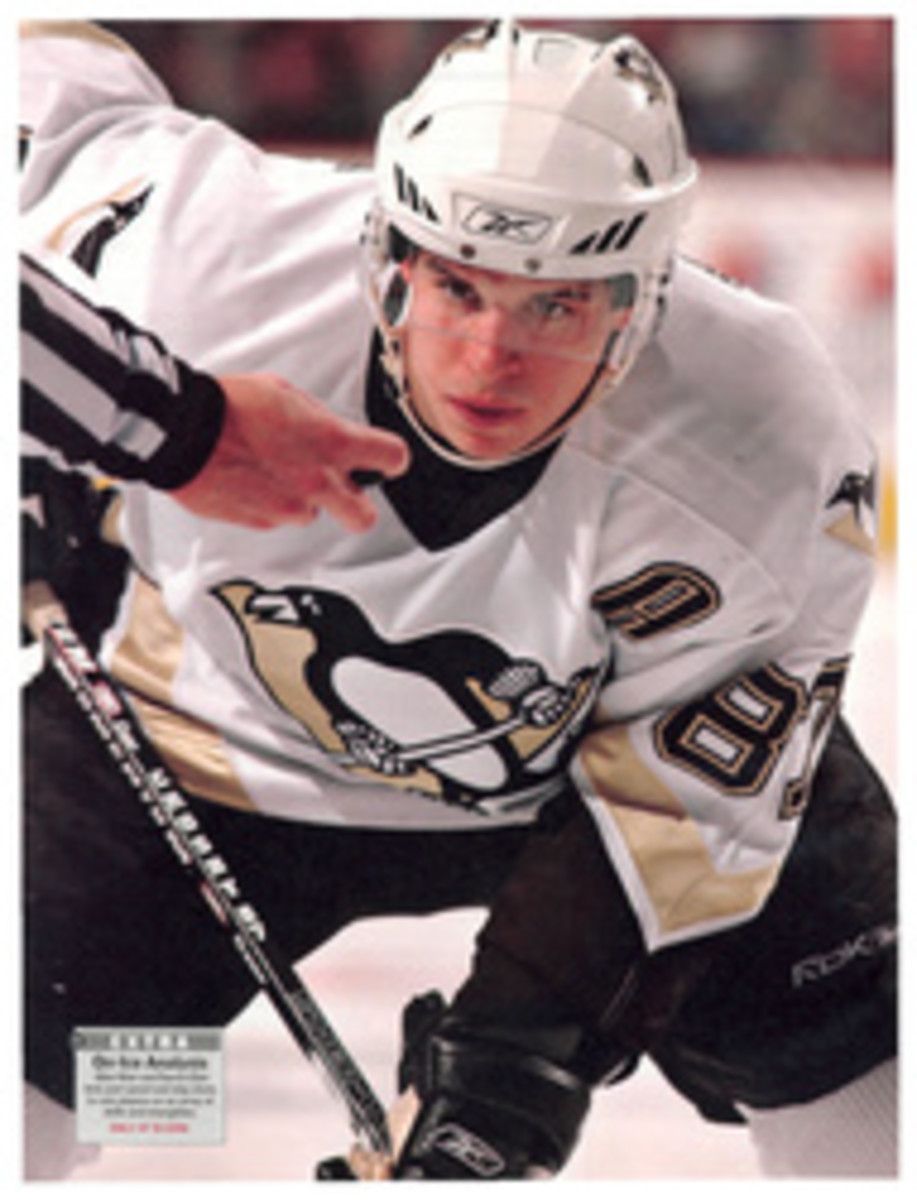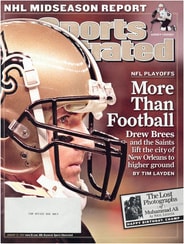
The Lost Photographs
MUHAMMAD ALI, whoturned 65 on Wednesday, is a man of superlatives. He is the greatest, vainest,loudest, most beloved (after having been the most reviled) and most admiredathlete in history. The most quoted, photographed, written about and discussed.The most inspiring. ¶ So it is a surprise to come upon previously unpublishedphotos of the man taken at the moments when those adjectives began to beuttered, first by him, of course, and then by the rest of us. It is hard now toseparate Muhammad Ali from the mythology that surrounds him. As he has beenreduced by Parkinson's disease to a dignified epigone of the beautiful athletehe once was, we resort to the recollections--the images, the stories, thevoice--that have become ingrained in our consciousness. Episodes of his lifeare part of our national saga, up there with George Washington at Valley Forgeand Elvis Presley walking into Sun Records, the legend obscuring the man. YetMuhammad Ali is that rarest of heroes, a man who, as you remove the gauzylayers of praise, the haze of hagiography, reinforces your best notions ofhim.
These photos ofthe boxer then known as Cassius Clay, from negatives lost for more than 40years, present a few of those crucible moments from startling new angles andwith revealing humanity. The photographer, Neil Leifer, is best known forcapturing iconic images later in the heavyweight's career--the scowling champstanding over the sprawled Sonny Liston in their second fight and, with armstriumphantly raised, walking away from a floored Cleveland Williams at theAstrodome. Leifer may have added to that canon with these photos from Clay's10-round win over Doug Jones in 1963 and the weigh-in before his title shotagainst Liston the next year. Clay's victory over Jones in a disputed decisionreinforced the notion that going into the first Liston fight the impudentLouisville Lip had no chance.
It was in themaelstrom around the first Liston fight, starting with the weigh-in, that Claybegan his transformation of sports and popular culture. The weigh-in forheavyweights was generally a pointless affair, and the photographers andwriters gathered in the freight area of the Miami Beach Convention Center onthe morning of Feb. 24, 1964, anticipated nothing more than the usual Joe Louissort of posed square-off. But what Clay did caught even his cornermen bysurprise. As he emerged from the dressing room, arms linked with Bundini Brownand Sugar Ray Robinson, accompanied by trainer Angelo Dundee, Clay dancedthrough the crowd chanting, "Float like a butterfly, sting like a bee.Rumble, young man, rumble." He seemed so manic that several reportersspeculated he was on the verge of a nervous breakdown. Clay taunted Liston,calling him a "big, ugly bear," and then predicted that Liston would godown in "eight, to prove I'm great."
In response,Liston, the fearsome champ widely held to be invincible, held up two fingers toindicate he would dispatch the challenger in the second.
"I'm ready torumble now, chump," Clay shouted, and lunged at Liston. Dundee, who heldhim back, recalls, "It was all an act. He was making Liston think he wascrazy, a scared kid."
Certainly, anypossibility that Liston, who had done very little training for the fight, mighttake the voluble young fighter seriously was dismissed after the boxingcommission doctor checked Clay's blood pressure and pronounced him "scaredto death."
"Did I haveListon shook up?" Clay would ask his own doctor, Ferdie Pacheco, later thatday. "I shook him up, didn't I?"
One night later,after Liston didn't answer the bell for the seventh round, Clay shook up much,much more. Immediately after the victory, as Clay lunged over Dundee and wavedhis fist at the crowd, he would shout, "I shook up the world. I'm thegreatest. I am the king of the world. I'm so pretty. I'm a bad man. I shook upthe world." You would be hard-pressed to come up with more than oneutterance by any other athlete that has passed into the language. Yet thisyoung fighter over the course of two days delivered a series of sportingstatements that would become in the English language as ubiquitous asPolonius's advice to young Laertes. That moment of triumph, gloved fistextended to the crowd as he is both restrained and hugged simultaneously byBrown and Dundee, is precisely when "shook up the world" and "kingof the world" passed through the membrane of our culture. This angle, thefish-eye lens overhead shot (far right), wasn't thought to exist untilrecently. It provides stark cartography of the instant, Ali in joyous triumph,Liston in despair slumped on his stool, just a few feet of canvas denoting thepassing of the old world and the birth of the new.
This is the momentwhen all those superlatives would start to become reality. Here is thebeginning of modern sport as we now take it for granted--as a part of ourculture, as flawed and wonderful and complex and transcendent as the wholecourse of human events.
EXTRA
Prize Pictures
Galleries of more never-seen-before photos of CassiusClay in the 1960s plus SI's best fight photos.
ONLY AT SI.COM
PHOTO
Neil Leifer
CLOSE CALL The 21-year-old Clay had his hands full against Jones (black trunks) in the 1963 bout 11 months before his title shot with Liston. Clay's prefight prayers (opposite, from left) were answered when he won a disputed decision.
THREE PHOTOS
Neil Leifer
[See caption above.]
PHOTO
Neil Leifer
"BIG, UGLY BEAR" Seemingly under control as he was escorted to the weigh-in by Robinson (below, left) and Brown, Clay tipped the scales when he began taunting Liston (second from far right).
PHOTO
Neil Leifer
[See caption above.]
FOUR PHOTOS
Neil Leifer
THE CRAZED KID Clay acted up in predicting a win in "eight, to prove I'm great"--the champ calmly countered that he'd prevail in two--and the next night truly went wild after Liston quit in Round 7.

